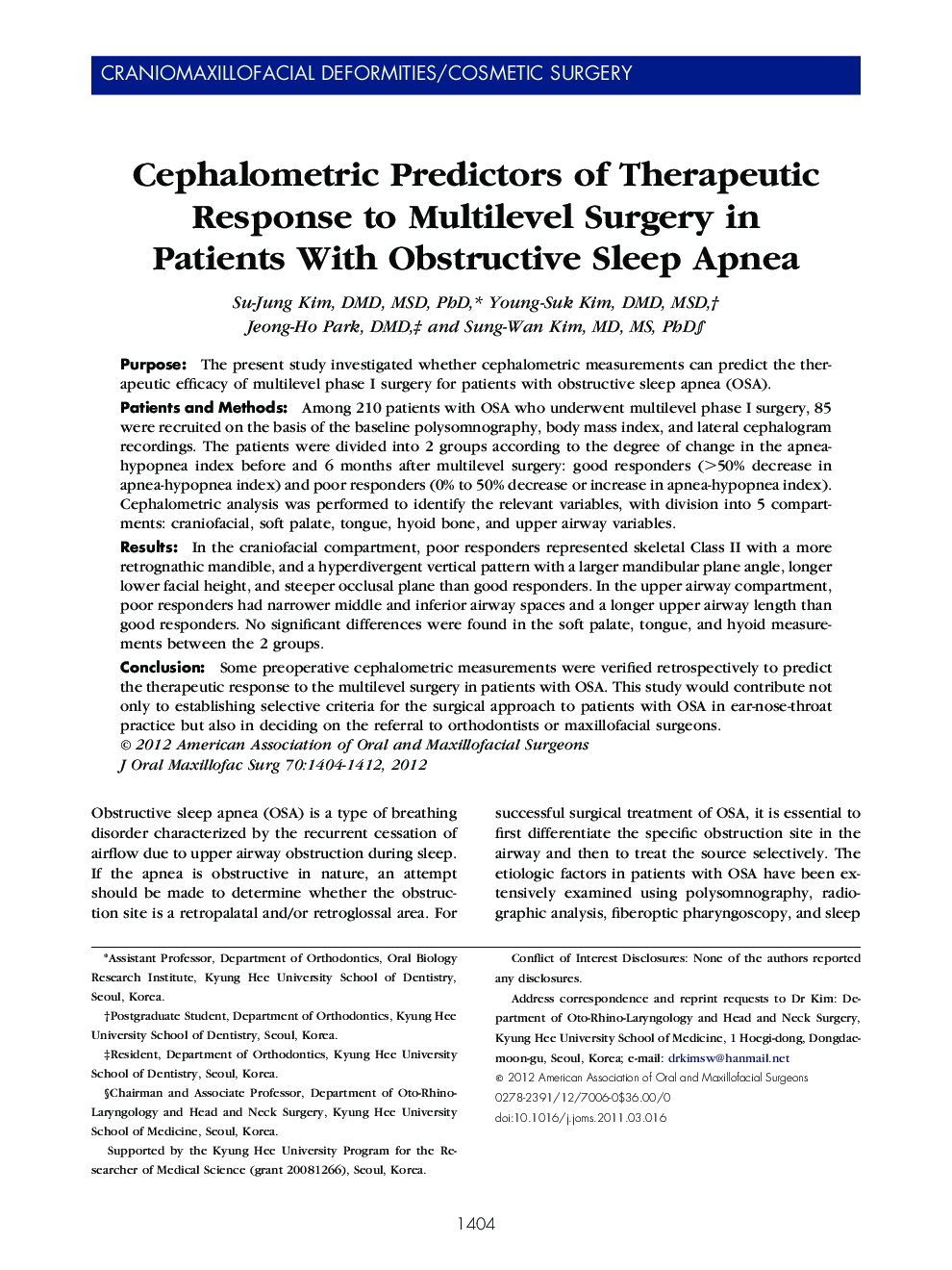| Article ID | Journal | Published Year | Pages | File Type |
|---|---|---|---|---|
| 3153102 | Journal of Oral and Maxillofacial Surgery | 2012 | 9 Pages |
PurposeThe present study investigated whether cephalometric measurements can predict the therapeutic efficacy of multilevel phase I surgery for patients with obstructive sleep apnea (OSA).Patients and MethodsAmong 210 patients with OSA who underwent multilevel phase I surgery, 85 were recruited on the basis of the baseline polysomnography, body mass index, and lateral cephalogram recordings. The patients were divided into 2 groups according to the degree of change in the apnea-hypopnea index before and 6 months after multilevel surgery: good responders (>50% decrease in apnea-hypopnea index) and poor responders (0% to 50% decrease or increase in apnea-hypopnea index). Cephalometric analysis was performed to identify the relevant variables, with division into 5 compartments: craniofacial, soft palate, tongue, hyoid bone, and upper airway variables.ResultsIn the craniofacial compartment, poor responders represented skeletal Class II with a more retrognathic mandible, and a hyperdivergent vertical pattern with a larger mandibular plane angle, longer lower facial height, and steeper occlusal plane than good responders. In the upper airway compartment, poor responders had narrower middle and inferior airway spaces and a longer upper airway length than good responders. No significant differences were found in the soft palate, tongue, and hyoid measurements between the 2 groups.ConclusionSome preoperative cephalometric measurements were verified retrospectively to predict the therapeutic response to the multilevel surgery in patients with OSA. This study would contribute not only to establishing selective criteria for the surgical approach to patients with OSA in ear-nose-throat practice but also in deciding on the referral to orthodontists or maxillofacial surgeons.
